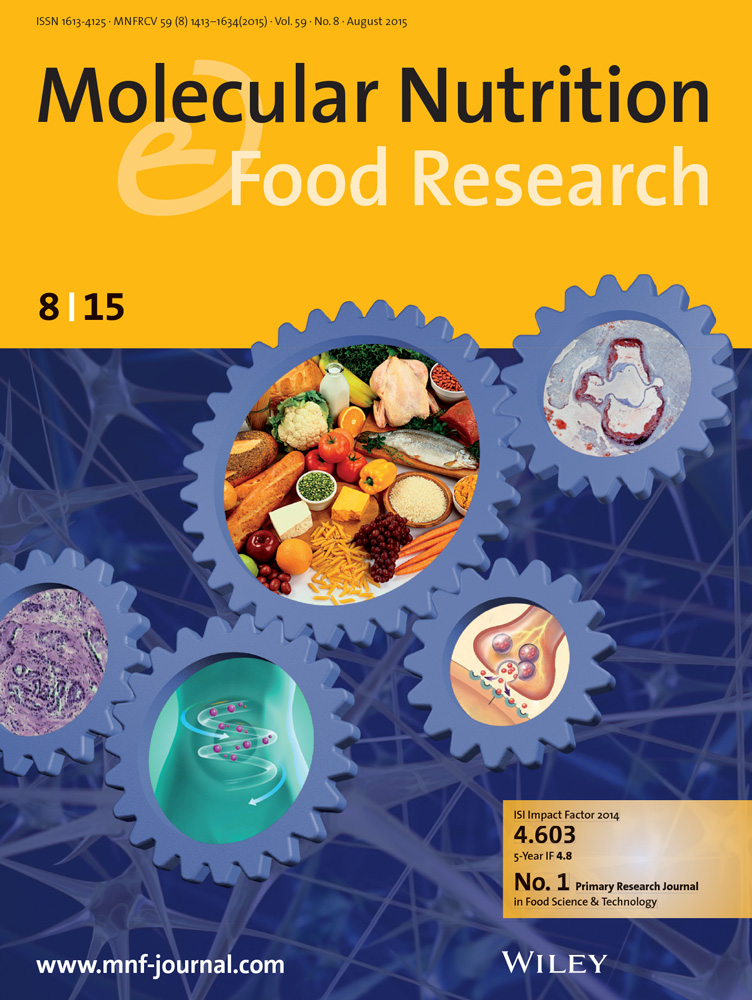端粒和端粒酶:生物活性食品化合物化学预防肝细胞癌的靶点。
IF 4.5
2区 农林科学
Q1 FOOD SCIENCE & TECHNOLOGY
引用次数: 0
摘要
端粒酶对端粒长度的维持在衰老、衰老和癌症中起着至关重要的作用。端粒酶亚基TERT启动子的突变在人类癌症中很常见。在肝细胞癌(HCC)中,端粒缩短有助于肿瘤前病变,如肝硬化。肝硬化期间端粒酶的激活可能会减少染色体的不稳定性,而在早期发育不良结节中抑制端粒酶可能会预防肝癌的发生。有证据表明,生物活性食物化合物(BFCs)可以通过调节端粒酶活性来减少和/或延缓HCC的发生。本文系统回顾了BFCs在肝癌发生过程中对端粒酶活性的影响。bfc以分离形式或作为提取物的一部分进行分析,并分为脂肪酸、类异戊二烯、异硫氰酸酯和酚类化合物。尽管结构多样,但BFCs通过共同的机制调节端粒酶,包括抑制TERT启动子处的激活蛋白,激活核受体或组蛋白H3超乙酰化。端粒酶也可以通过激活抗氧化防御途径间接调节。了解端粒酶的再激活及其对BFCs的调节是建立有效的针对端粒酶的HCC化学预防策略的关键。本文章由计算机程序翻译,如有差异,请以英文原文为准。
Telomeres and Telomerase: Targets for Chemoprevention of Hepatocellular Carcinoma With Bioactive Food Compounds.
The maintenance of telomere length by telomerase plays an essential role in senescence, aging, and cancer. Mutations in the TERT promoter, a telomerase subunit, are frequent in human cancers. In hepatocellular carcinoma (HCC), telomere shortening contributes to preneoplastic conditions such as cirrhosis. Telomerase activation during cirrhosis may reduce chromosomal instability, while its suppression in early dysplastic nodules may prevent hepatocarcinogenesis. Evidence suggests that bioactive food compounds (BFCs) can reduce the incidence and/or delay the onset of HCC by modulating telomerase activity. A systematic review was conducted on the role of BFCs in telomerase activity during hepatocarcinogenesis. BFCs were analyzed in isolated form or as part of extracts and categorized into fatty acids, isoprenoids, isothiocyanates, and phenolic compounds. Despite structural diversity, BFCs modulate telomerase through common mechanisms, including inhibition of activating proteins at the TERT promoter, activation of nuclear receptors, or histone H3 hyperacetylation. Indirectly, telomerase can also be modulated via activation of antioxidant defense pathways. Understanding telomerase reactivation and its modulation by BFCs is key to establishing effective HCC chemoprevention strategies targeting telomerase.
求助全文
通过发布文献求助,成功后即可免费获取论文全文。
去求助
来源期刊

Molecular Nutrition & Food Research
工程技术-食品科技
CiteScore
8.70
自引率
1.90%
发文量
250
审稿时长
1.7 months
期刊介绍:
Molecular Nutrition & Food Research is a primary research journal devoted to health, safety and all aspects of molecular nutrition such as nutritional biochemistry, nutrigenomics and metabolomics aiming to link the information arising from related disciplines:
Bioactivity: Nutritional and medical effects of food constituents including bioavailability and kinetics.
Immunology: Understanding the interactions of food and the immune system.
Microbiology: Food spoilage, food pathogens, chemical and physical approaches of fermented foods and novel microbial processes.
Chemistry: Isolation and analysis of bioactive food ingredients while considering environmental aspects.
 求助内容:
求助内容: 应助结果提醒方式:
应助结果提醒方式:


